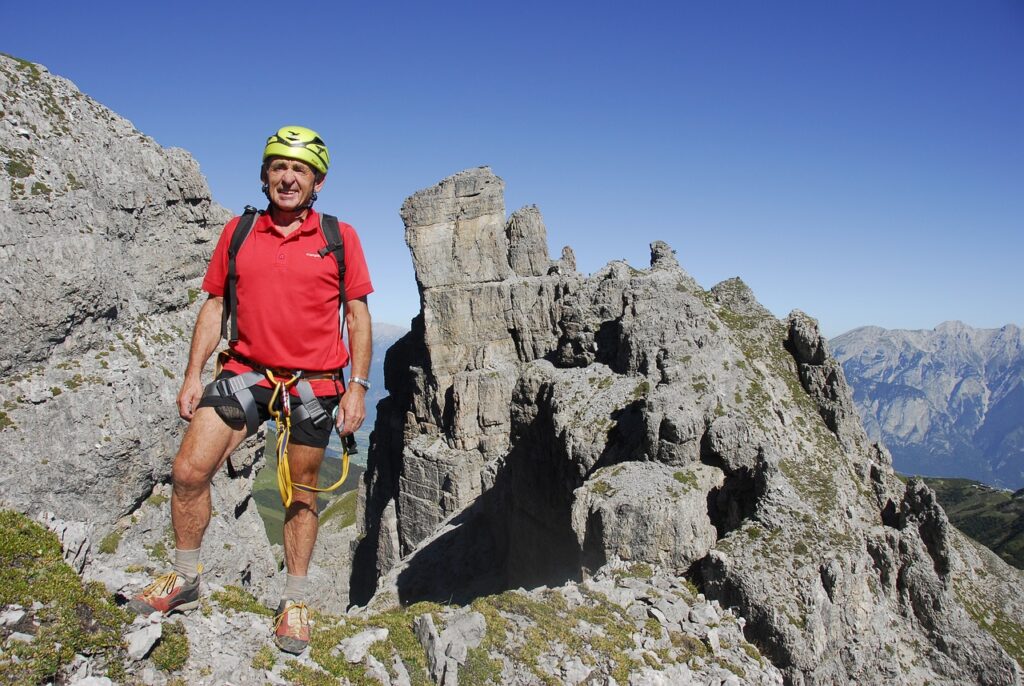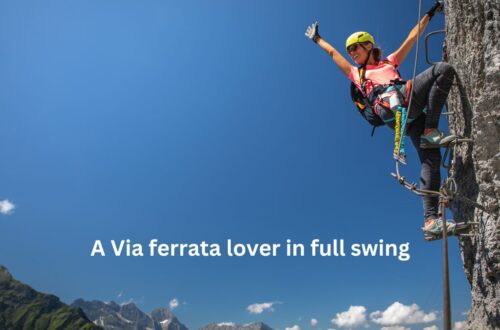Via Ferrata Astragalus: A Thrilling Ascent in Cheile Bicazului-Hășmaș
Right in the breathtaking Cheile Bicazului-Hășmaș National Park, Via Ferrata Astragalus offers climbers a great experience in Romania. This via ferrata route is a favorite among adventurers, combining technical climbing challenges with stunning panoramic views of the Bicaz Gorge. As one of the most well-equipped and scenic via ferrata routes in Romania, Astragalus is a must-visit for those seeking an unforgettable climbing experience.

Click here for another unforgettable Via Ferrata in Romania.
Cheile Bicazului: A Natural Wonder
The Bicaz Gorge (Cheile Bicazului) is one of Romania’s most dramatic and picturesque natural formations, located in the Eastern Carpathians. It forms the natural boundary between Harghita and Neamț counties and is part of the larger Cheile Bicazului-Hășmaș National Park.
This area is famous for its towering limestone cliffs, which rise up to 300 meters above the winding Bicaz River. Over millions of years, the river has carved out a series of narrow canyons, creating steep rock walls, hidden caves, and deep ravines. The gorge is home to rare flora and fauna, including endemic plant species such as the Astragalus pseudopurpureus, from which the via ferrata route takes its name.
The area is also steeped in legend, with local stories of lost treasures, haunted caves, and heroic figures who once roamed the cliffs. This rich history, combined with the gorge’s breathtaking scenery, makes Via Ferrata Astragalus a physical challenge and an adventure into one of Romania’s most magical landscapes.
Visit https://www.braveandboldmenswear.com for a fantastic choice of outdoor menswear.
Overview of the Via Ferrata Astragalus
Via Ferrata Astragalus is one of the most challenging and well-maintained climbing routes in Cheile Bicazului. Opened in recent years, it was designed for experienced climbers who want to test their endurance and technical skills while enjoying the spectacular scenery of the gorge.
- Location: Cheile Bicazului-Hășmaș National Park, Romania
- Difficulty: C/D (Intermediate to Difficult)
- Route Length: 450 meters
- Elevation Gain: 250 meters
- Climbing Duration: 2 to 3 hours
- Best Season: Spring to Autumn (April to October)
The route consists of vertical rock faces, exposed ridges, and narrow ledges that require strength, focus, and proper via ferrata equipment. The steel cables and iron rungs give necessary support, but the exposure to heights and demanding sections make it unsuitable for beginners.
Key Features and Challenges of the Route
1. The Start: The Wall of Courage
The adventure begins at the base of a steep limestone wall, which immediately tests a climber’s skill and endurance. This section, nicknamed the “Wall of Courage,” involves vertical climbing with well-placed iron rungs that guide climbers upward. While the ascent is tough, the first part of the route provides breathtaking views of the surrounding forest and the Bicaz River winding below.
2. The Traverse of the Eagle’s Nest
After the initial ascent, climbers reach a narrow ledge known as the “Eagle’s Nest Traverse.” This part of the route is particularly exposed, with sheer drops on one side and towering rock walls on the other. Here, climbers may spot golden eagles soaring overhead, adding to the sense of adventure and connection with nature.
3. The Vertical Chimney
One of the most technical sections of Via Ferrata Astragalus is the “Vertical Chimney.” This narrow rock passage requires careful foot placement and strong upper body control to ascend safely. The steel cables provide security, but climbers must rely on their strength and technique for this tight, challenging climb.
4. The Suspension Bridge
A highlight of the route is the suspension bridge, which spans a deep chasm between two rock formations. The bridge sways slightly as climbers cross, adding an element of thrill to the experience. From this vantage point, climbers can take in stunning panoramic views of the surrounding Ceahlău Mountains and the Bicaz Gorge.
5. The Final Push: The Summit Ascent
The last section of the route involves a final push to the summit, where it becomes slightly less vertical but remains exposed. Climbers will navigate narrow ridges and scramble over rocky outcrops before reaching the summit viewpoint. Here, the reward for the effort is an incredible 360-degree panorama of Cheile Bicazului and the surrounding peaks.
Click here for a fantastic selection of European adventures.
Flora and Fauna of Cheile Bicazului
The Cheile Bicazului-Hășmaș National Park is home to a diverse range of plant and animal species, making it a paradise for nature lovers. The Astragalus pseudopurpureus, a rare plant that thrives in rocky environments, lends its name to the via ferrata route. It is one of the many endemic species found in the area.
Wildlife in the gorge includes chamois, foxes, and lynxes, while birdwatchers can spot peregrine falcons, golden eagles, and wallcreepers. The region’s biodiversity adds to the overall experience, making the climb not only a physical challenge but also an opportunity to connect with nature.
Legends and Folklore of Bicaz Gorge
Like many dramatic landscapes in Romania, Cheile Bicazului is rich in folklore. One of the most famous legends tells of a young shepherd who was chased by bandits and had no choice but to leap off one of the gorge’s cliffs, vanishing into the mist. Locals say his spirit still lingers in the gorge, protecting those who respect the land.
Another story speaks of a hidden Dacian treasure buried deep within one of the caves along the route. While no gold has ever been found, the idea of an ancient hidden fortune adds an air of mystery to the climb.
Click here for the adventure of a lifetime.
Practical Tips for Climbing Via Ferrata Astragalus
For those planning to tackle this tough route, preparation is key.
How to Get There
- By Car: The Bicaz Gorge is accessible from Cluj-Napoca (4 hours), Iași (3 hours), or Brașov (4 hours). The nearest town is Bicaz, from where climbers can follow marked trails to the base of the route.
- By Public Transport: Buses run from Piatra Neamț to Bicaz, but from there, a taxi or hike is required to reach the gorge.
Essential Gear
- Helmet, harness, and via ferrata lanyard with shock absorbers
- Sturdy climbing shoes with good grip
- Gloves for a better grip on cables
- Plenty of water and energy snacks
Best Time to Climb
- The route is best tackled from April to October, avoiding winter when snow and ice make the climb too dangerous.
- Morning climbs are recommended to avoid crowds and strong afternoon sun.
Safety Considerations
- Check the weather forecast before climbing; avoid the route during rain or strong winds.
- Climb with a partner or guide if you’re unfamiliar with the area.
- Respect the natural environment—stay on marked paths and carry out any trash.
Conclusion
Via Ferrata Astragalus is one of Romania’s most thrilling and scenic climbing experiences. With its steep ascents, breathtaking views, and rich natural beauty, it is an unforgettable adventure for experienced climbers. Whether you’re drawn to the challenge of the vertical chimneys, the thrill of the suspension bridge, or the legend-filled landscapes of Cheile Bicazului, this via ferrata is an absolute must-try.
For those seeking an adventure that blends physical endurance with the magic of Romania’s wild landscapes, Via Ferrata Astragalus is an ascent like no other.

